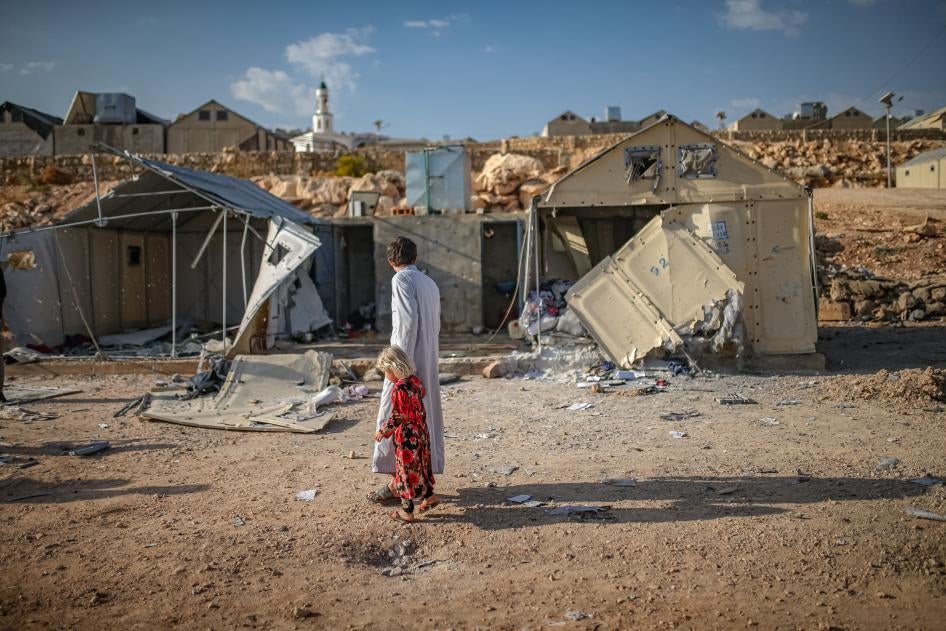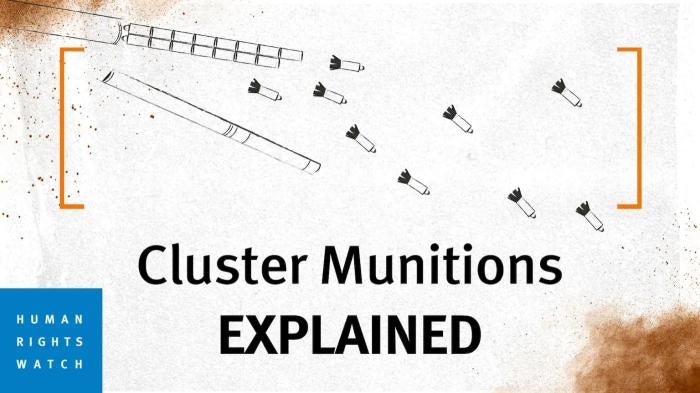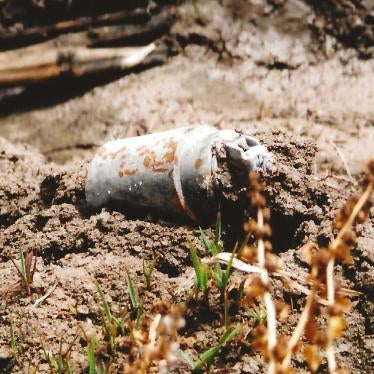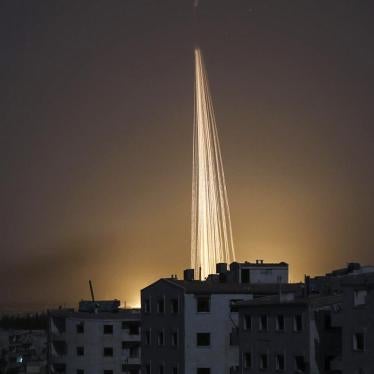- Cluster munition attacks killed or wounded at least 987 people in 2022, of whom 890 were in Ukraine, and 95 percent of whom were civilians.
- Cluster munitions are globally banned because they cause both immediate and long-term civilian harm, leaving behind unexploded remnants that act as landmines for years.
- Civilian harm from new use of cluster munitions and recent transfers of the weapon show the urgent need for all countries to join the international ban on cluster munitions.
(Geneva, September 5, 2023) – Civilian harm from new use of cluster munitions and recent transfers of the weapon show the urgent need for all countries to join the international ban on cluster munitions, Human Rights Watch said today in releasing the 96-page global “Cluster Munition Monitor 2023” report.
“Cluster munitions are abhorrent weapons that are globally banned because they cause both immediate and long-term civilian harm and suffering,” said Mary Wareham, arms advocacy director at Human Rights Watch and editor of the “Cluster Munition Monitor 2023.” “It’s unconscionable that civilians are still dying from cluster munition attacks 15 years after these weapons were outlawed.”
Cluster munitions can be fired from the ground by artillery, rockets, missiles, and mortar projectiles, or dropped by aircraft. They typically open in the air, dispersing multiple submunitions or bomblets over a wide area. Many submunitions fail to explode on initial impact, leaving duds that can indiscriminately injure and kill like landmines for years, until they are cleared and destroyed.
During 2022 – the latest year covered by the report casualty statistics – 95 percent of cluster munition casualties recorded by the Monitor were civilians. Cluster munition attacks killed or wounded at least 987 people in 2022, of whom 890 were in Ukraine. Russia has used cluster munitions repeatedly in Ukraine since its full-scale invasion of the country on February 24, 2022, causing civilian deaths and injuries. Ukrainian forces have also used cluster munitions, resulting in civilian casualties. The Myanmar military and Syrian government forces used cluster munitions in 2022, causing further civilian harm. None of these countries have signed or ratified the international treaty banning cluster munitions.
Cluster Munition Monitor did not record any new casualties from cluster munition attacks in 2021 but identified at least 149 victims from remnants of earlier cluster munition attacks, primarily from unexploded submunitions. In 2022, there were a total of at least 185 casualties from cluster munition remnants in Azerbaijan, Iraq, Laos, Lebanon, Syria, Ukraine, and Yemen. Children accounted for 71 percent of all casualties of cluster munition remnants where the age group was recorded.
Russia has used stocks of old cluster munitions and newly developed ones in Ukraine in 2022 and the first half of 2023. In July 2023, the United States began transferring to Ukraine an unspecified quantity of its stockpiled 155mm artillery-delivered cluster munitions, which deliver DPICM submunitions that have a dud or unexploded ordnance (UXO) failure rate of between 6 and 14 percent. At least 21 government leaders and officials, including from countries supporting Ukraine’s war effort, criticized the US government decision to transfer these weapons.
“The greatest obstacle to countries working to eradicate cluster munitions are governments that are unwilling to join the convention and that undermine its principles by using or transferring the weapon,” Wareham said. “Overall, countries that have banned cluster munitions are making steady progress to destroy their stockpiles and clear contaminated areas, despite wide-ranging challenges.”
A total of 112 countries have ratified the 2008 Convention on Cluster Munitions and 12 more have signed, indicating a willingness to abide by its provisions. Nigeria ratified the convention on February 28; South Sudan did so on August 3.
There have been no confirmed reports or allegations of new use, production, or transfers of cluster munitions by any state party since the convention was adopted in Dublin, Ireland on May 30, 2008.
Since 2008, parties to the convention have collectively destroyed nearly 1.5 million cluster munitions and 178.5 million submunitions, which represents 99 percent of the cluster munition stocks that they have declared. Bulgaria destroyed the last of its stockpiled cluster munitions in June. Bulgaria, Peru, and Slovakia destroyed a total of at least 4,166 stockpiled cluster munitions and 134,598 submunitions during 2022 and the first half of 2023.
“Cluster Munition Monitor 2023” tracks efforts to eradicate cluster munitions by all countries, regardless of whether they have joined the treaty. The report found that 26 countries and 3 other areas are contaminated or suspected to be contaminated by cluster munition remnants. Under the convention, cluster munition contaminated state parties collectively cleared more than 93 square kilometers of affected land in 2022, destroying at least 75,779 submunitions and other cluster munition remnants.
“Cluster munitions are widely stigmatized weapons for ethical, legal, and humanitarian reasons,” Wareham said. “Governments that buck the stigma against cluster munitions should reconsider their position in light of the terrible harm these weapons cause and join the international ban.”
“Cluster Munition Monitor 2023” is the annual monitoring report by the Cluster Munition Coalition, the global coalition of nongovernmental organizations co-founded and chaired by Human Rights Watch. The report will be presented to countries attending the 11th annual meeting of the Convention on Cluster Munitions at the United Nations in Geneva on September 11-14.








